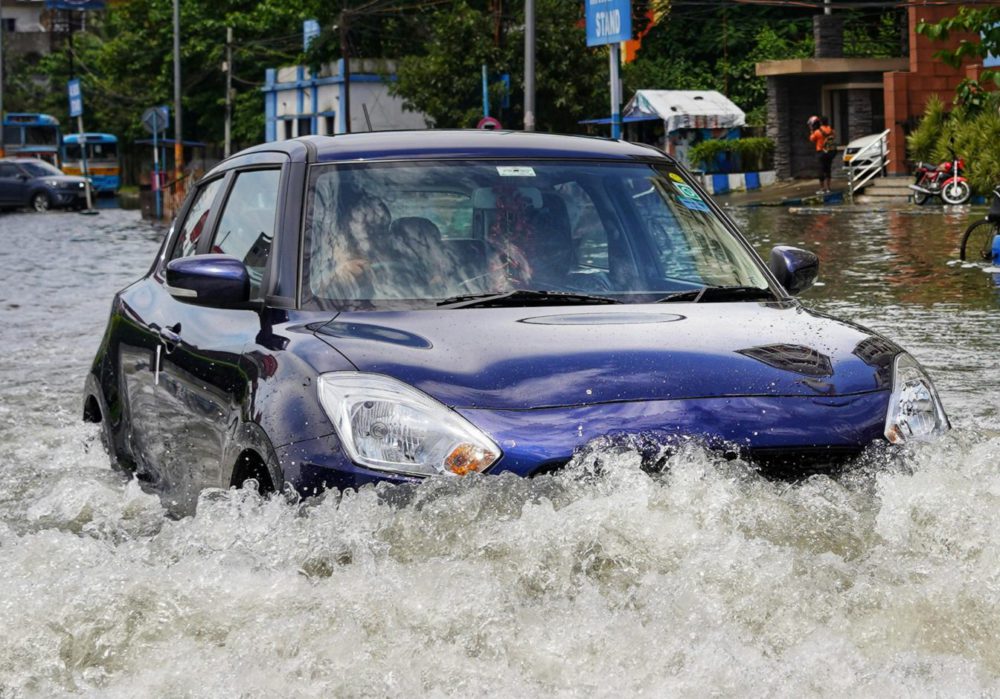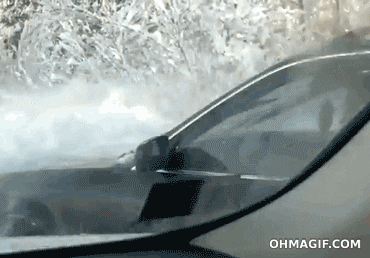Winter’s here and brings with it many different challenges. We’ve paired up with road safety expert Dave Harford to give you some top driving tips so you can reduce your chances of needing to make a claim, and most importantly, to stay safe.
The winter months bring with them unpredictable weather. And whether it’s a white Christmas or not, conditions on the road can prove dicey in a number of ways, with ice, water and even leaves affecting your driving.
It’s important you’re prepared for the changes in road surfaces, and the change in temperature, as driving at this time of year can often be challenging and potentially dangerous. I’ve pulled together some of my top tips for better preparation and safer driving in colder climates.
Tips for driving in wet weather
Wet weather driving can be difficult. It demands a higher concentration level than you’d need on a nice sunny day. As always, your journey will be safer and easier if both you and your car are ready to handle the conditions that lay ahead.
For a start, your headlights and wipers should be in good condition and used alongside demisters, to give you the best possible visibility. During heavy rain, surface water can accumulate on roads, so you’ll need to adapt your driving style. Slow down and give yourself more distance between you and the vehicle in front, as braking distances can greatly increase during a wet spell.
Good tyres will improve handling and braking performance, but they will also reduce the risk of aquaplaning. ‘Aquaplaning’ is the term used to describe when there’s too much water for your tyres to cut through, which causes them to momentarily lose contact with the road surface. If this happens, you’ll have no control of the car, so make sure you slow down when there’s standing water on the road.
Floodwater is more dangerous than it looks
Floodwater is more dangerous than it looks If you experience getting caught in flash flooding, DO NOT enter the floodwater. Moving water is particularly dangerous. Just 6 inches of fast flowing water can sweep an adult off their feet, 12 inches can make a car float, and 2 feet of moving water can totally wash a car away. Scary stuff.


Floodwater can also hide other dangers. What’s under the surface? Possibly raised manhole covers, washed away roads, and other debris. Then there’s the risk of disease and contaminants that are potentially present in floodwater that you won’t be able to see. If you can take another route to avoid an area of flooding (however long the resulting diversion may be), I’d highly recommend that you do.
Tips for driving in icy and snowy conditions
It’s not just wet weather you need to be prepared for. Winter’s dynamic, changing very quickly and it can often catch people out. Being better prepared could save you a lot of hassle and stress. Here are a few simple things to look out for:
- Fuel: Do you regularly run your car’s fuel levels below 1/4 of a tank? If you do this in winter, you risk breaking down in locations where you could be vulnerable and at the mercy of the elements. Give yourself the best chance and keep fuel level above half during periods of cold weather.
- Lights: Make sure all lights are working as they should be and that the lenses are kept clean from dust, mud and anything that might dim the light they produce. This is key to maintaining good visibility both for you, and of you to other road users.
- Windscreen Washers: It’s actually illegal and dangerous to use a car with an empty washer bottle. Keep it topped up with the correct ratio of water and antifreeze to reduce the risk of freezing and maximise the cleaning efficiency.
- Wiper Blades: These should be in one piece, free of splits and not worn. If you notice they smear or create lines on your windscreen then it’s time to replace them. Visibility may already be difficult during heavy rain or snow. Good wipers will help.
- Fluid levels: Keep engine oil and radiator level topped up. Again, it’s not worth risking a breakdown in the middle of nowhere on a cold winter’s night because you didn’t check something as simple and quick as this.
- Tyres: These are absolutely critical for keeping you on the road. During wet or snowy times, grip is essential. Less grip means longer stopping distances and lower handling capability. The legal minimum tread depth is 1.6mm. Don’t let them get this low heading into winter. Change them at 3mm for safety.
The real key to driving in winter months is this: perform slow and gentle manoeuvres. Reduce your speed & don’t be aggressive. Once you lose control on ice or snow, you become a passenger, at the mercy of your car and mother nature. Slow down on icy roads.
“Stopping distances for ice and snow can be up to 10 times longer than usual, so increase the distance between you and the car in front”
If you have to drive on icy or snowy surfaces, the best advice I can give anyone is to keep your speed and engine revs low. Starting off in as high a gear as possible will make a massive difference. It’ll reduce the chances of you experiencing wheelspin and getting stuck. Stopping distances for ice and snow can be up to 10 times longer than usual, so increase the distance between you and the car in front.
Don’t forget what’s inside the car
So what should you carry inside your car? You can’t predict where or when you’ll break down or get stranded. If you’re unlucky, it may be cold and it might be wet. It’s not good practice to wait in your car while waiting for assistance, but it’s a problem I see all too often.
Too many people with no coats who haven’t left the house prepared. Even if you’re not affected by a breakdown, you could get stuck due to road conditions, an incident caused by another driver or adverse weather causing severe disruption. It’s obviously very hard to predict. When driving in freezing temperatures, I’ve listed a few items below that you’ll want to have handy in your car, and a couple of other crucial items to keep you safe and prepared if you get caught out on the roads:
- A warm coat or blanket
- A torch, either with spare batteries or a wind up type
- A shovel
- An ice scraper
- Some de-icer
- A mobile phone with an in-car charger
- Some food and drink
- Suitable footwear in case you need to walk
- Any essential medication
- Your wallet
This is just a short guide to helping you be in the best position when you start a journey during the winter months. There are of course many other things to consider. If the weather is severe, why risk going out at all? Don’t go to look at floods, and don’t drive to remote locations to look at the snow and take photos. Yes, people do get into problems when they do that – I’ve seen it first-hand!

An overly ambitious winter driver.
Plan your route, think about stopping locations. Let people know when and which way you are travelling. If there are adverse conditions, allow more time. Slow down. It’s better to get there late than never.
My final word is this, plan and be prepared. Don’t become complacent, and always expect the unexpected!
Dave Harford is a Road Safety advocate and a Community First Responder for the West Midlands Ambulance Service. For more road safety advice, follow him on Twitter here: @dharford79




